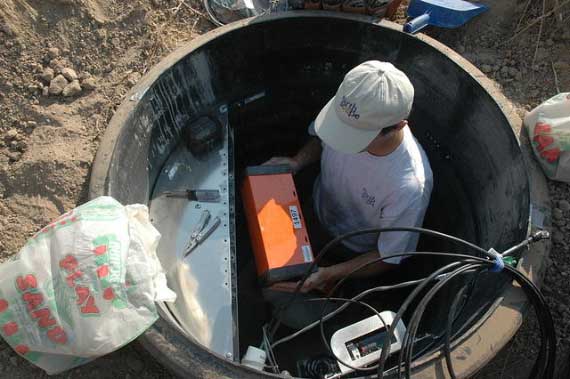About Our Client
The USArray component of the EarthScope experiment is a continental-scale seismic observatory designed to provide a foundation for integrated studies of continental lithosphere and deep Earth structure over a wide range of scales.
Funded by National Science Foundation, the USArray provided new insight and new data to address fundamental questions in earthquake physics, volcanic processes, core-mantle interactions, active deformation and tectonics, continental structure and evolution, geodynamics, and crustal fluids.
The deployment of the USArray / TA remote stations started in 2004 and grew to the level of about 450 stations with station spacing of ~70 km, rolled from West to East of continental USA, and currently is operating in Alaska. Through the course of the USArray / TA project, each remote station was commissioned and decommissioned five times, running at a single location for about two years.
From remote stations, data are transmitted in real-time to the USArray / TA Facility Data Center operated by Scripts Institute of Oceanography at UC San Diego. The final data repository is located at the IRIS Data Management Center in Seattle for further distribution to IRIS members and its affiliates.
Project Objective
In order to meet its scientific objectives, the USArray/TA was designed to operate in real-time with maximum reliability and data availability. Configuration of each remote USArray/TA station consists of a broadband seismometer (the majority of seismometers in USArray/TA are the STS-2.5), the Q330 data acquisition, the EpiSensor accelerometer, two barometers, an infrasound sensor, a temperature sensor and VIE unit (Intelligent power management and communication device).
At the USArray / TA Alaska deployment, the surface Broadband seismometers were replaced by the borehole seismometer due to Alaska’s harsh environmental conditions (~70% of borehole seismometers are STS-5).
The USArray / TA Data Center runs the Antelope system software for remote stations data collection, quality control, and data analysis.
Project Achievement
The Kinemetrics Aspen platform implemented in the USArray / TA project delivered a 99.8% data return over ~1,800 installations in over ten years. The synergy of high-data quality and data availability of these synchronized data streams, coming from the multitude of sensors, allowed unprecedented progress in science: more than 130 Ph.D. dissertations and 250 peer-reviewed papers published, and more counting.

